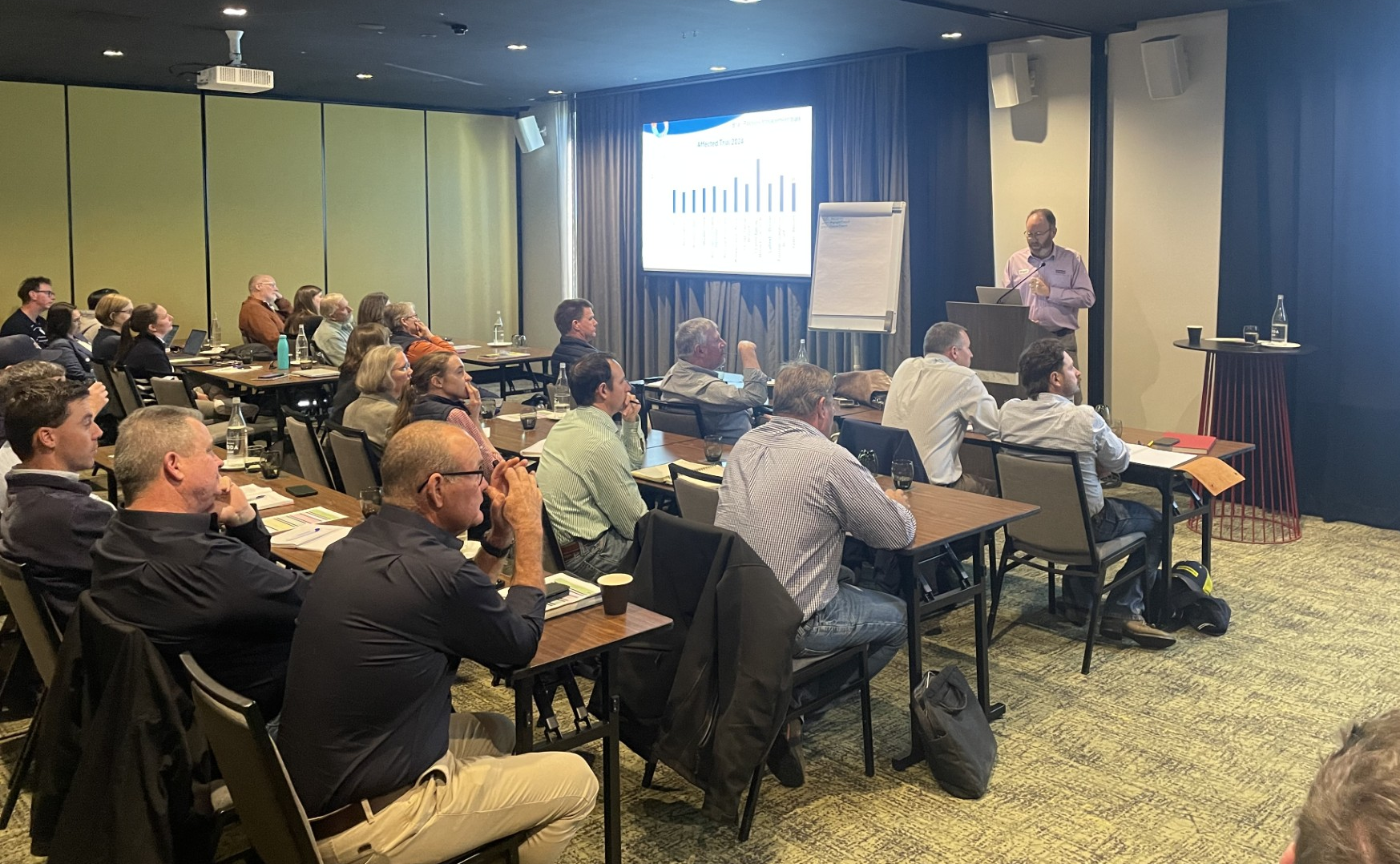MLA Pasture Dieback Science Forum prioritises areas of future research
In June, Meat and Livestock Australia (MLA) hosted a Pasture Dieback Science Forum in Brisbane attended by about 50 people from around eastern Australia to listen, learn and discuss pasture dieback. The attendees came from a range of disciplines including producers, agronomists, entomologists, integrated pest management (IPM) specialists, microbiologists, seed representatives and government officials. The purpose of the Forum was to:
- Understand the current pasture dieback situation in Queensland and New South Wales from the perspective of the state agricultural departments and producers;
- Understand what research was currently being conducted on pasture dieback; and
- Conduct a gap analysis to determine where future research should be directed to address pasture dieback.
Ten scientists and representatives from the Department of Primary Industries (DPI) attended the forum to share their research findings and experience working with graziers in Queensland. DPI Principal Agronomist Stuart Buck was part of the group.
“We had a group of scientists that specialise in agronomy, microbiology, mycology, virology, entomology and cross-over areas like high powered sequencing for plant-pathogen relationships. From my perspective it was great to have all the experts in the room from across organisations and regions. Some we have collaborated with extensively like NSW Department of Primary Industries and Regional Development (DPIRD) and Local Land Services (LLS) but others were new faces and all their input was valuable and needed. MLA did a great job in pulling all the minds together in one room.”
Representatives from QLD DPI, NSW DPIRD and NSW LLS discussed the current spread and impact of pasture dieback across eastern Australia, highlighting that it has continued to spread further south and west and methods had been developed to help producers manage with dieback.
Producers from NSW and QLD discussed their experiences when dieback was first identified on their properties and how they had dealt with it, including acting quickly to resow more tolerant pastures or managing for recovery.

“Hearing from producers in their own words about the impact dieback has had on their business was an impactful way to start the day, especially for the new faces in the room. It was also great to hear that management strategies we developed with research findings and producer experience have been helpful to so many people.”
Researchers from the DPI, Southern Cross University, Queensland University of Technology and Applied Horticultural Research presented their current research projects addressing pasture dieback, including what species are tolerant or susceptible and what management strategies can be used.
“A deeper understanding of which grasses are the most tolerant, maybe even resistant to the pasture mealybug and why, is important research we need to do more of. There is still so much we don’t know and further research will be needed to find the answers. This level of research hasn’t been done in tropical pastures before, because there hasn’t been the need. But the people in the room have experience with a range of pathogens in intensive cropping and horticulture and also temperate pastures, so we were able to generate good discussion and ideas for future research with their input.”
Experts in IPM, endophytes (bacteria and fungi that live in plants without causing harm) and entomopathogens (fungi that feed on insects) discussed how these technologies could be used to mitigate the effect of dieback.
A Gap Analysis activity was conducted to discuss, prioritise and scope future research areas around the control and management of dieback. Priority research areas identified by the groups included:
- Control strategies: A program of work developing IPM, beneficial insects, endophytes and entomopathogens to assist in controlling the pasture mealybug
- Management strategies: Development of new grass varieties that exhibit greater resistance and tolerance to the pasture mealybug.
Future research is now being planned with a range of stakeholders (including DPI) based on the outcomes from the forum.
“Thank you to MLA for spearheading this forum and getting all the relevant parties in the room. It’s clear that there has been a lot of consultation with industry and the scientific community to try and come up with the best way forward. We are glad to have a seat at the table.”